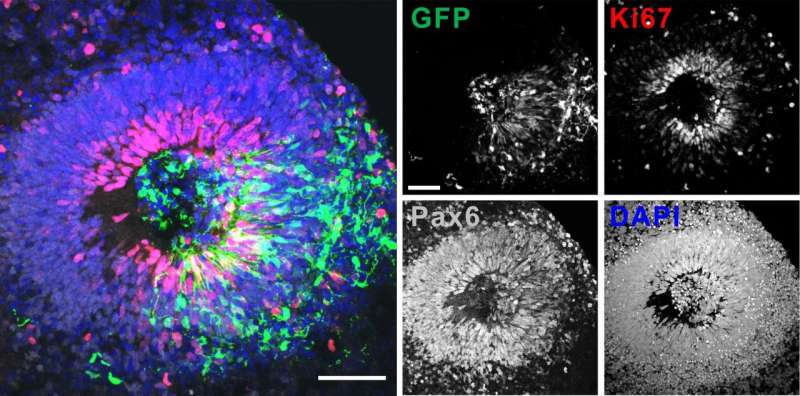New mechanism of action for DISC1, a psychiatric disorder agent, revealed by scientists

A protein called disrupted-in-schizophrenia 1, encoded by the DISC1 gene, has been established as a genetic risk factor for a wide array of psychiatric disorders, including schizophrenia, bipolar disorder, major depression, and autism spectrum disorders. It was originally identified in a large Scottish family suffering from multiple psychiatric disorders due to a chromosomal translocation-induced disruption. The biochemical and structural characterizations of DISC1 and its interactions with target proteins are very scarce.
In a recent study, scientists from the Hong Kong University of Science and Technology, in a close collaboration with a team from the Perelman School for Medicine, University of Pennsylvania, described the high-resolution structure of DISC1 in complex with Ndel1, uncovering a new mechanism of action for DISC1 based on its structure, which has implications for how genetic aberrations may contribute to psychiatric disorders. Their findings were published in Neuron on November 1, 2017.
"Our study revealed that mechanistically, DISC1 regulates Ndel1's kinetochore attachment, but not its centrosome localization, during mitosis," said Professor Zhang Mingjie, leader of the research group. "Functionally, disrupting DISC1/Ndel1 complex formation prolongs mitotic length and interferes with cell-cycle progression in human cells, and it causes cell-cycle deficits of neuronal stem cells in the embryonic mouse cortex and human forebrain organoids. We also observed similar deficits in organoids derived from schizophrenia patient induced pluripotent stem cells (iPSCs) with a DISC1 mutation that disrupts its interaction with Ndel1."
Ye Fei, a leading author of the paper, said, "The findings uncovered a new mechanism of action for DISC1 based on its structure and has implications for how genetic insults may contribute to psychiatric disorders. We characterized the binding properties between DISC1 and Ndel1. This structural insight into the DISC1/Ndel1 complex allowed us to develop a highly specific approach to study the function of their interaction by designing a highly specific peptide, which only inhibits the formation of the DISC1/Ndel1 complex but does not interfere with the bindings of these two proteins to many other target proteins."
"Based on structural insights, we identified a function of DISC1/Ndel1 interaction in regulating cell-cycle progression of neuronal stem cells in an animal model and in human forebrain organoids," said professor Zhang. "Our study from patient-derived forebrain organoids provides a potential mechanistic understanding of how DISC1 mutation with its C-terminal deletion can affect neural developmental processes, and insight into mechanisms of pathogenesis of complex psychiatric disorders."
More information: Fei Ye et al, DISC1 Regulates Neurogenesis via Modulating Kinetochore Attachment of Ndel1/Nde1 during Mitosis, Neuron (2017). DOI: 10.1016/j.neuron.2017.10.010


















